Research on the Realization Path of Railway Intelligent Construction Based on System Engineering
Abstract
:1. Introduction
2. Hall Methodology
3. Railway Intelligent Construction
3.1. Transformation of Construction Mode
3.2. System Architecture
4. Realization Path of Railway Intelligent Construction
4.1. “Three Steps” Strategy
4.2. Intelligent Construction Technology Support
4.2.1. BIM Technology
4.2.2. Other Technologies
5. Case Studies
5.1. Platform Content and Characteristics
5.2. Model Establishment Based on GIS and BIM
5.3. Tunnel Section Monitoring and Algorithm Prediction
5.4. Full Life-Cycle Analysis and Evaluation
6. Discussion and Suggestions
7. Conclusions
- (1)
- At present, many fields of engineering construction around the world are in the key period of modernization and information transformation and upgrading. In the long run, China’s railway intelligent construction is the only way. This paper gives the definition of railway intelligent construction, then constructs the railway intelligent construction system architecture from the three dimensions of life cycle, management level and technical support based on Hall’s three-dimensional theory in system engineering, and puts forward the “three-step” implementation path based on this architecture. Through the 3D functional architecture, the intelligent management functions of cost management, schedule management, quality control, contract management and information management are finally realized.
- (2)
- Taking 3D railroad intelligent construction system architecture as the guide, combined with the development situation of Chinese railroad construction, this paper proposes a “three-step” realization path. It discusses the technical support framework that needs to be taken into account to realize 3D railroad intelligent construction, that is, based on BIM, integrating GPS and GIS, algorithm prediction and machine learning, IoT and artificial intelligence technology, big data and cloud computing technology.
- (3)
- An intelligent construction platform of a railroad in Zhejiang Province, China, has achieved some of the functions proposed in this paper to a certain extent, but it can be further developed on this basis. China’s railway intelligent construction is still in the primary stage. Seizing the rare opportunity brought by the new round of scientific and Technological Industrial Revolution and accelerating the formulation of China’s intelligent railway development strategy is of great significance to continuously maintain the leading global position of China’s high-speed railway. Under the general trend of new technology and industrial revolution, it is suggested that the railway engineering construction should deeply promote the application of BIM Technology, build a solid digital foundation and at the same time integrate other technologies together to help upgrade the intelligence of railroad construction.
Author Contributions
Funding
Conflicts of Interest
References
- Kubina, M.; Šulyová, D.; Vodák, J. Comparison of Smart City Standards, Implementation and Cluster Models of Cities in North America and Europe. Sustainability 2021, 13, 3120. [Google Scholar] [CrossRef]
- Woods, E.; Alexander, D.; Labastida, R.R.; Watson, R. UK Smart Cities Index—Assessment of Strategy and Execution of the UK’s Leading Smart Cities. 2017. Available online: https://e.huawei.com/uk/special_topic/solution/smart_cities_index_2017 (accessed on 9 April 2022).
- Varró, K.; Szalai, Á. Discourses and practices of the smart city in Central Eastern Europe: Insights from Hungary’s ‘big’ cities. Urban Res. Pract. 2021, 14, 1–25. [Google Scholar] [CrossRef]
- Manitiu, D.N.; Pedrini, G. Urban smartness and sustainability in Europe. An ex ante assessment of environmental, social and cultural domains. Eur. Plan. Stud. 2016, 24, 1766–1787. [Google Scholar] [CrossRef]
- Cardullo, P.; Kitchin, R. Smart urbanism and smart citizenship: The neoliberal logic of ‘citizen-focused’ smart cities in Europe. Environ. Plan. C Politics Space 2017, 37, 813–830. [Google Scholar] [CrossRef] [Green Version]
- Wang, X.; Meng, J.; Zhang, Y. Analysis on the Policy and Technology Application of Japan to Promote the Development of Intelligent Society. In Proceedings of the International Conference on Education, Singapore, 26–28 December 2016. [Google Scholar]
- Yang, J.; Kwon, Y.; Kim, D. Regional Smart City Development Focus: The South Korean National Strategic Smart City Program. IEEE Access 2021, 9, 7193–7210. [Google Scholar] [CrossRef]
- Huang, W.; Wei, Y.; Guo, J.; Cao, J. Next-generation innovation and development of intelligent transportation system in China. Sci. China Inf. Sci. 2017, 60, 110201. [Google Scholar] [CrossRef] [Green Version]
- Wang, H.; Shen, Y.; Niu, Y.; Zheng, Y. Design and research of building automation system and its system planning for green intelligent building. J. Environ. Prot. Ecol. 2019, 20, 832–841. [Google Scholar]
- Chunfang, L.U. Intelligent construction technology of railway engineering in China. Front. Eng. Manag. 2019, 6, 503–516. [Google Scholar] [CrossRef]
- Shi, T. Informatization status and intelligent development of China’s high-speed railway. Sci. Technol. Guide 2019, 37, 383–392. (In Chinese) [Google Scholar]
- Lei, M.; Lin, D.; Huang, Q.; Shi, C.; Huang, L. Research on the construction risk control technology of shield tunnel underneath an operational railway in sand pebble formation: A case study. Eur. J. Environ. Civ. Eng. 2020, 24, 1558–1572. [Google Scholar] [CrossRef]
- Ning, X.; Zhu, Q.; Zhang, H.; Wang, C.; Han, Z.; Zhang, J.; Zhao, W. Dynamic Simulation Method of High-Speed Railway Engineering Construction Processes Based on Virtual Geographic Environment. ISPRS Int. J. Geo-Inf. 2020, 9, 292. [Google Scholar] [CrossRef]
- Xu, J.Y.; Lu, W.S. Smart Construction from Head to Toe: A Closed-Loop Lifecycle Management System Based on IoT. In Proceedings of the Construction Research Congress 2018, New Orleans, LA, USA, 2–4 April 2018; American Society of Civil Enginters: Reston, VA, USA, 2018; pp. 157–168. [Google Scholar] [CrossRef]
- Yang, Z.; Ding, P.; Wang, D.; You, Y.; Qiao, J. Landslide Risk Analysis on Sichuan-Tibet Railway (Kangding to Nyingchi Section). Tiedao Xuebao/J. China Railw. Soc. 2018, 40, 97–103. [Google Scholar] [CrossRef]
- Zhao, Y. Application and development of intelligent construction based on BIM Technology in railway industry. Railw. Comput. Appl. 2019, 28, 1–6. (In Chinese) [Google Scholar]
- Bilal, M.; Oyedele, L.O.; Qadir, J.; Munir, K.; Ajayi, S.O.; Akinade, O.O.; Owolabi, H.A.; Alaka, H.A.; Pasha, M. Big Data in the construction industry: A review of present status, opportunities, and future trends. Adv. Eng. Inform. 2016, 30, 500–521. [Google Scholar] [CrossRef]
- Tang, S.; Shelden, D.R.; Eastman, C.M.; Pishdad-Bozorgi, P.; Gao, X. A review of building information modeling (BIM) and the internet of things (IoT) devices integration: Present status and future trends. Autom. Constr. 2019, 101, 127–139. [Google Scholar] [CrossRef]
- Shin, M.-H.; Baek, J.-H. Design and Construction of Rail Infrastructure BIM Integrated Management System for Systematic Management of Rail Infrastructure BIM Design Performance Products. J. Korean Soc. Railw. 2020, 23, 886–894. [Google Scholar] [CrossRef]
- Yang, Q.; Wang, Z. Information-Based Construction of High-Speed Railway Tunnel. Shock Vib. 2017, 2017, 5318785. [Google Scholar] [CrossRef] [Green Version]
- Shin, M.H.; Lee, H.K.; Kim, H.Y. Benefit–Cost Analysis of Building Information Modeling (BIM) in a Railway Site. Sustainability 2018, 10, 4303. [Google Scholar] [CrossRef] [Green Version]
- Silva, C.P.; Dersch, M.S.; Edwards, J.R. Quantification of the Effect of Train Type on Concrete Sleeper Ballast Pressure Using a Support Condition Back-Calculator. Front. Built Environ. 2020, 6, 604180. [Google Scholar] [CrossRef]
- Yuan, Q.; Zeng, W.; Li, Z.; Gao, T.; Yang, D.; He, Q. Intelligent railway line selection method based on improved D3QN deep reinforcement learning. J. Railw. Sci. Eng. 2022, 19, 7. (In Chinese) [Google Scholar]
- You, Z.; Zheng, L.; Feng, L. Basic theory and architecture of intelligent construction system. J. Civ. Eng. Manag. 2021, 38, 105–111+118. (In Chinese) [Google Scholar]
- Changwei, Y.; Zonghao, L.; Xueyan, G.; Wenying, Y.; Jing, J.; Liang, Z. Application of BP Neural Network Model in Risk Evaluation of Railway Construction. Complexity 2019, 2019, 2946158. [Google Scholar] [CrossRef] [Green Version]
- Shao, S.; Li, P.; Zhen, J. Study on the Evaluation Index System of China Intelligent High-speed Railway Based on Technical Characteristic. In Proceedings of the 2019 IEEE Intelligent Transportation Systems Conference (ITSC), Auckland, New Zealand, 27–30 October 2019. [Google Scholar]
- Shi, J.; Li, Q. “Intelligent” Technical Guidelines for Chongqing East Railway Station Building and Supporting Hub Area. Math. Probl. Eng. 2021, 2021, 6680380. [Google Scholar] [CrossRef]
- Tian, S.; Wu, K.; Wang, Z.; Wang, M.; Ma, W.; Yi, W. Discussion on the Realization Route of Intelligent Construction of Railway Tunnel in China. J. China Railw. Soc. 2022, 44, 134–142. (In Chinese) [Google Scholar]
- Fan, Q.; Lin, P.; Wei, P.; Ning, Z.; Li, G. Closed loop control theory of intelligent construction. J. Tsinghua Univ. (Sci. Technol.) 2021, 61, 660–670. (In Chinese) [Google Scholar]
- Niu, Y.; Lu, W.; Chen, K.; Huang, G.G.; Anumba, C.J. Smart Construction Objects. J. Comput. Civ. Eng. 2016, 30, 04015070. [Google Scholar] [CrossRef] [Green Version]
- Zhi, P. Research on BIM based railway construction management platform and key technologies. China Acad. Railw. Sci. 2018. (In Chinese) [Google Scholar]
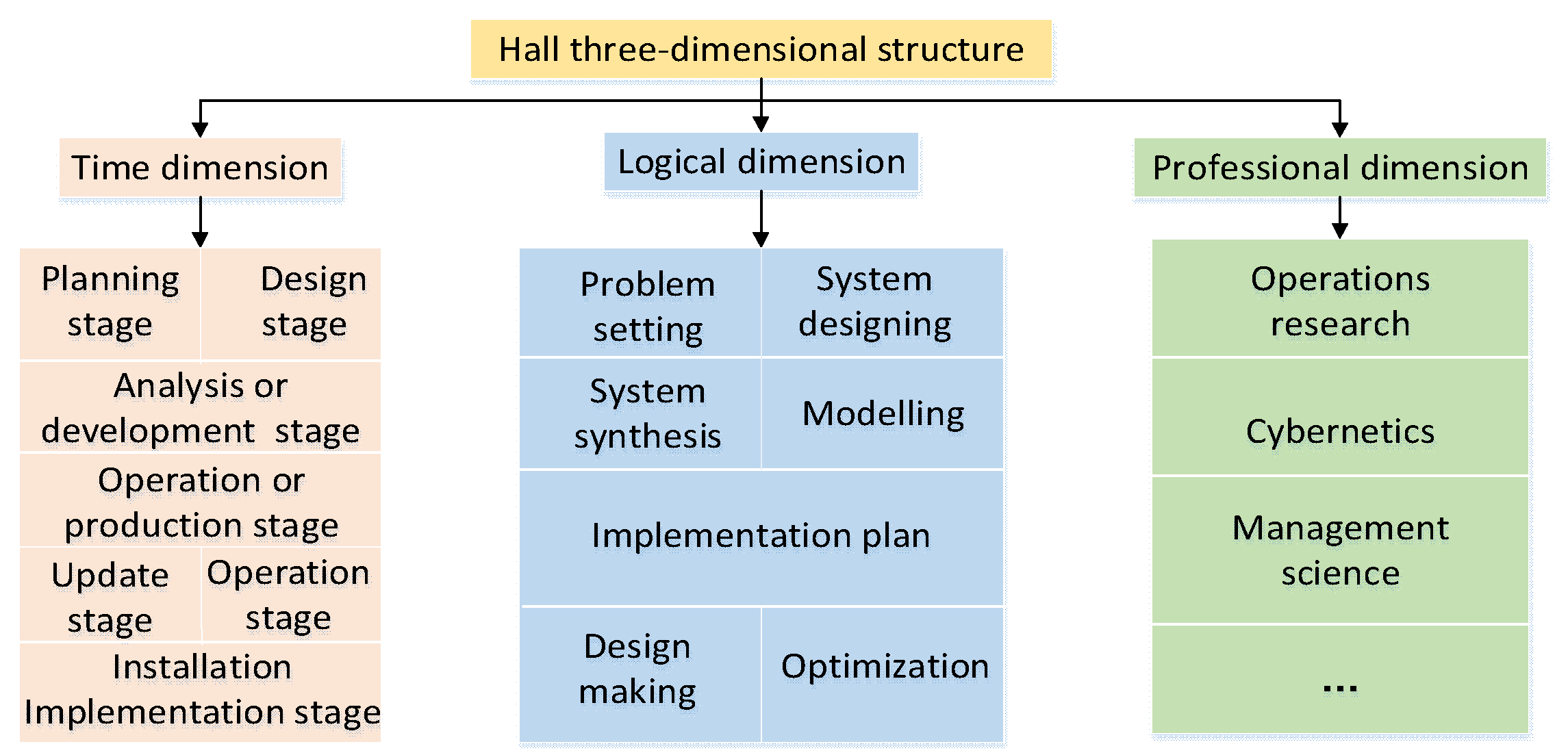
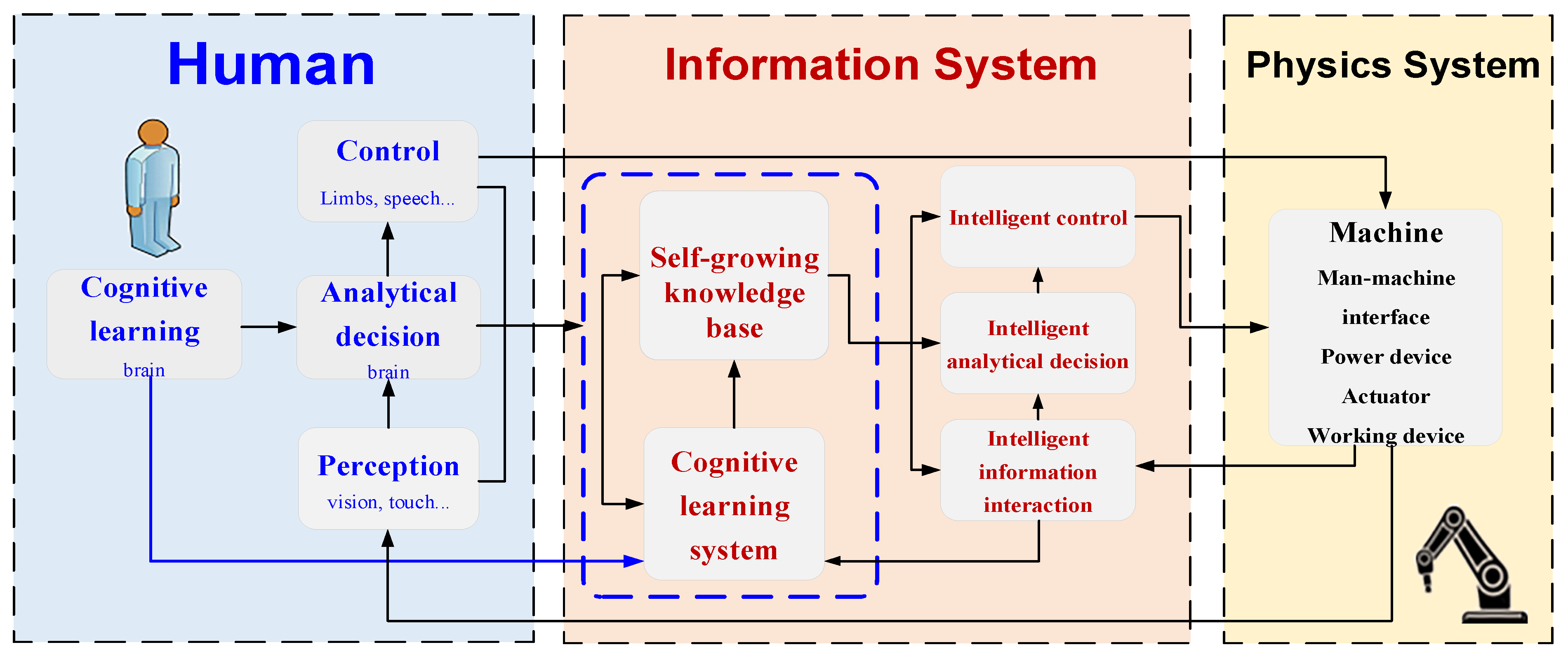

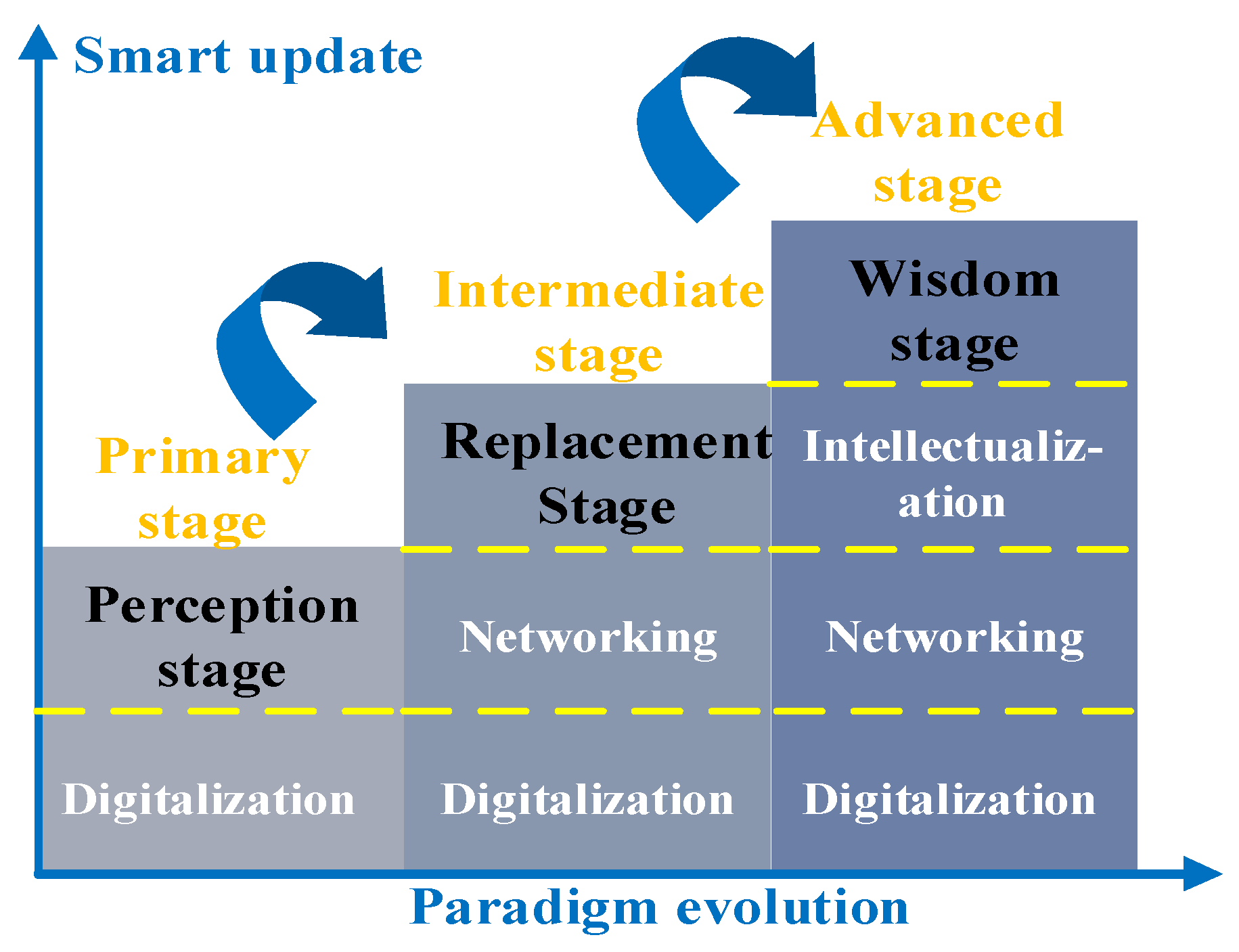
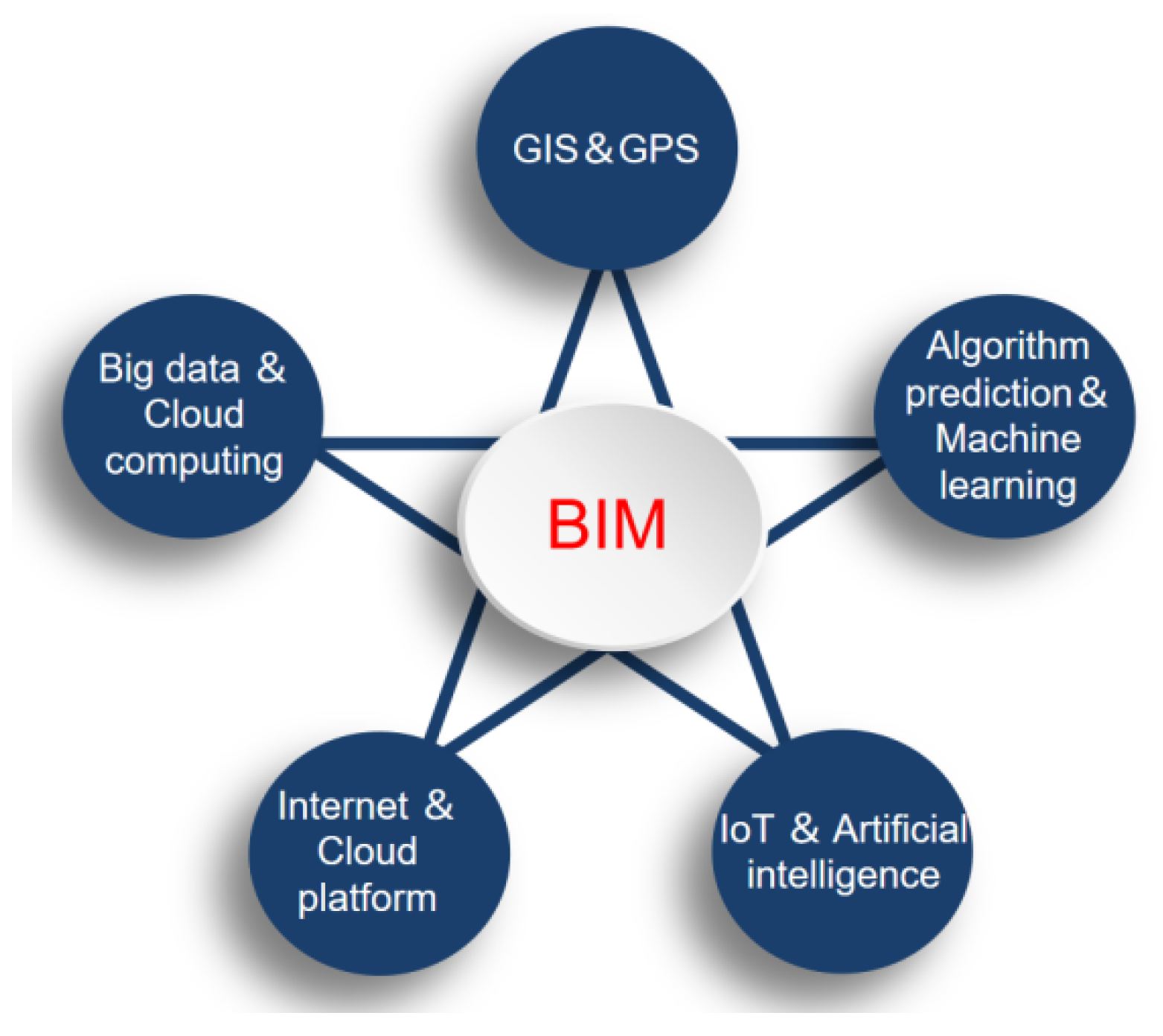
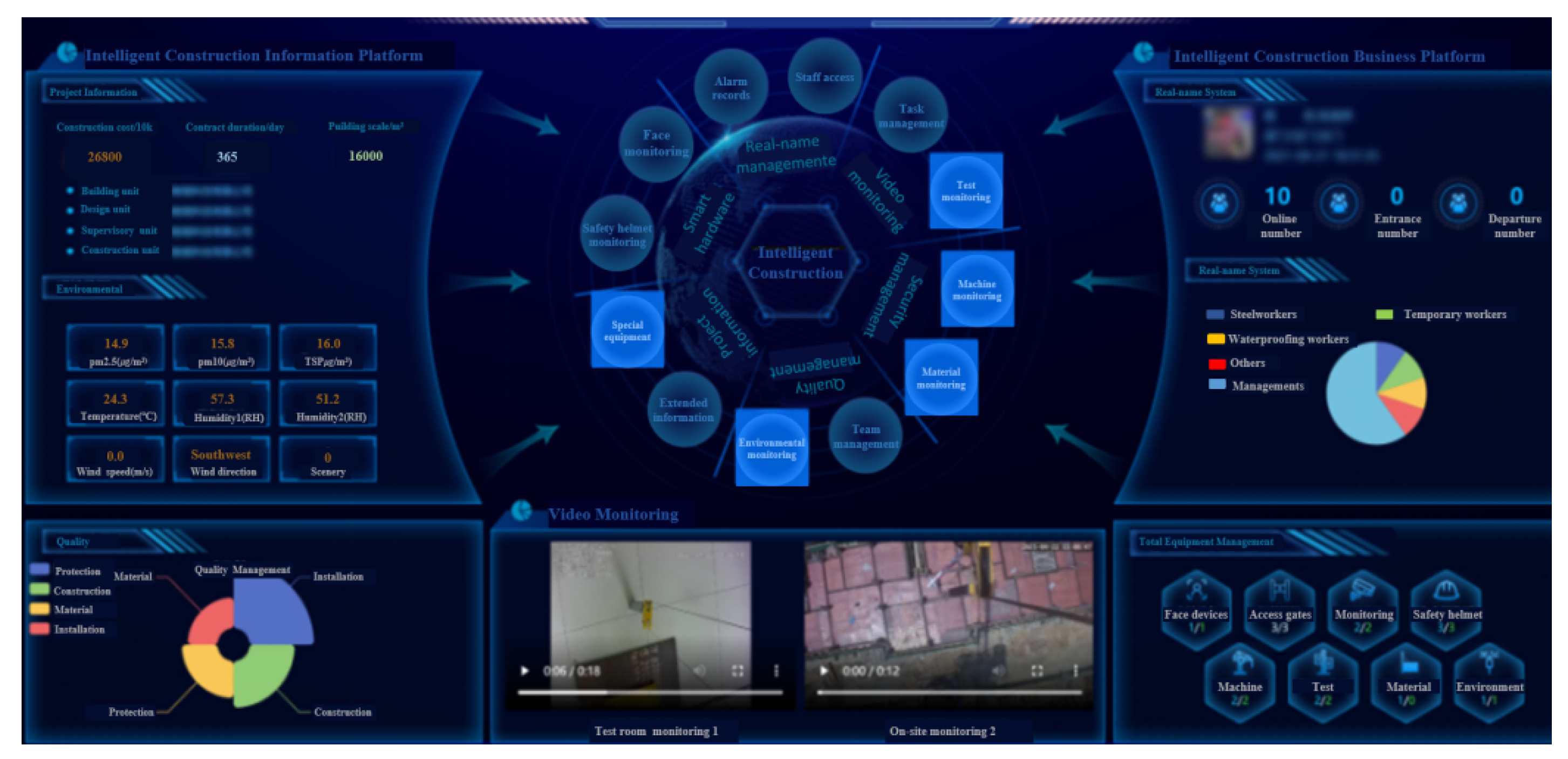
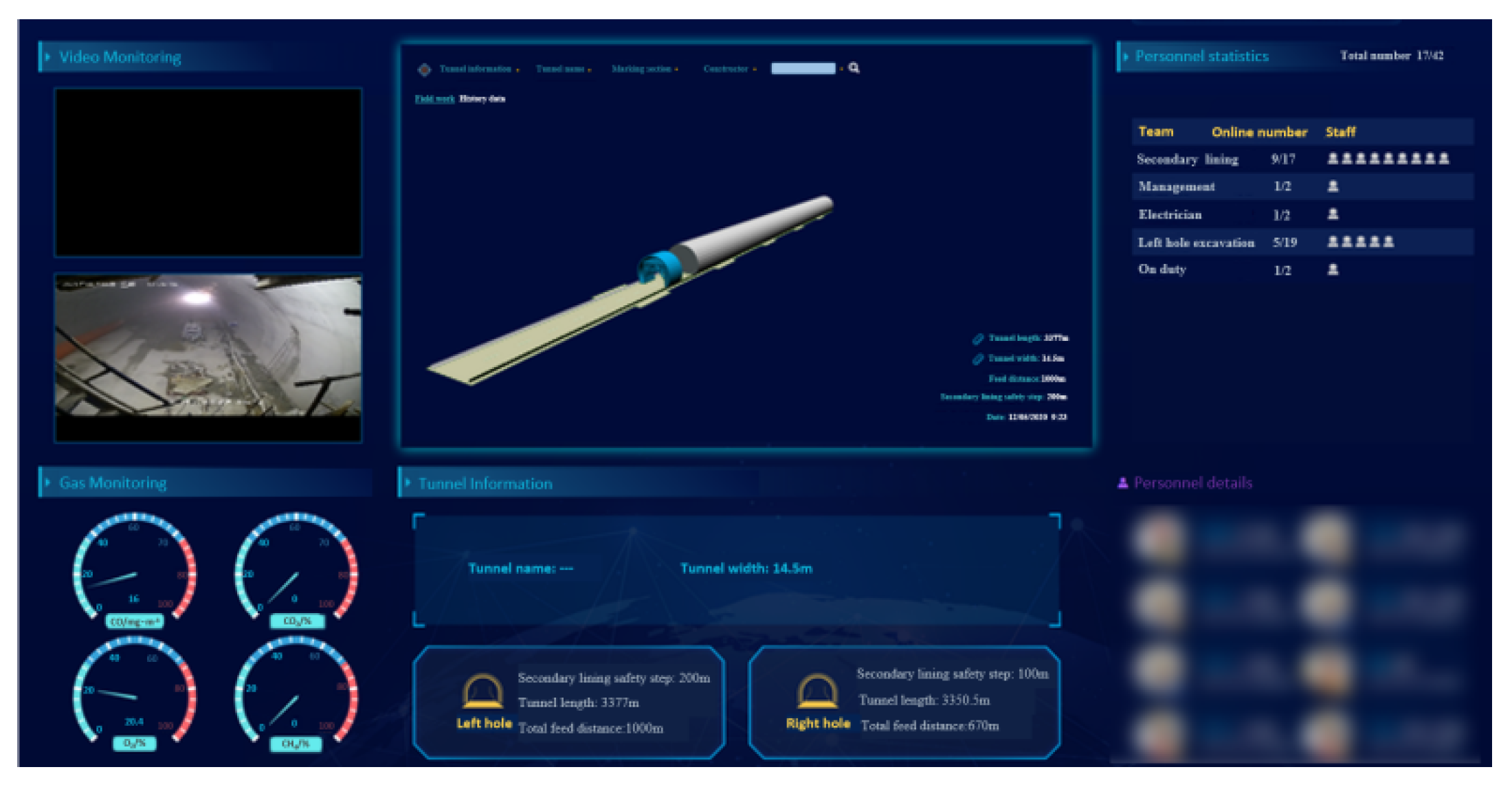

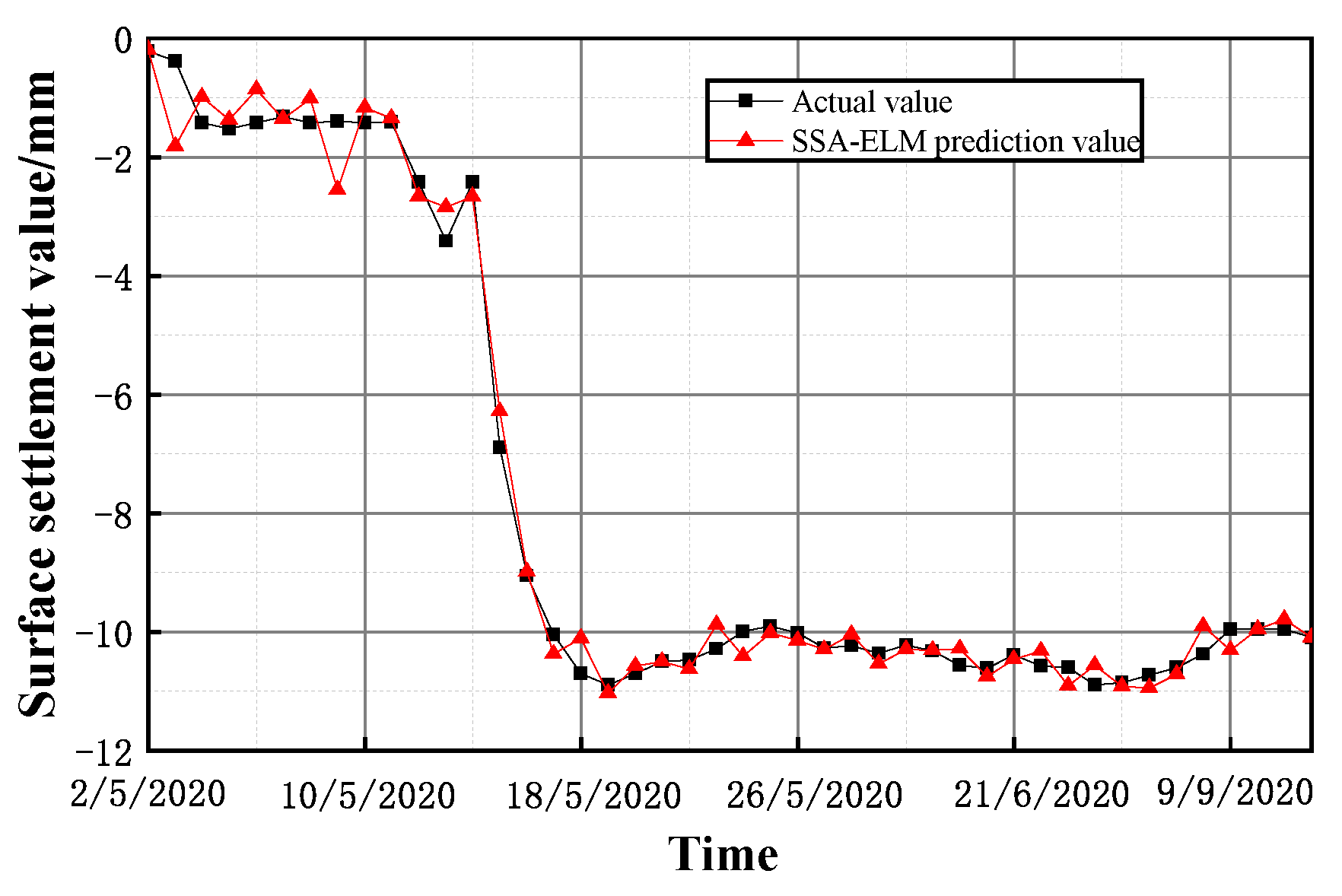
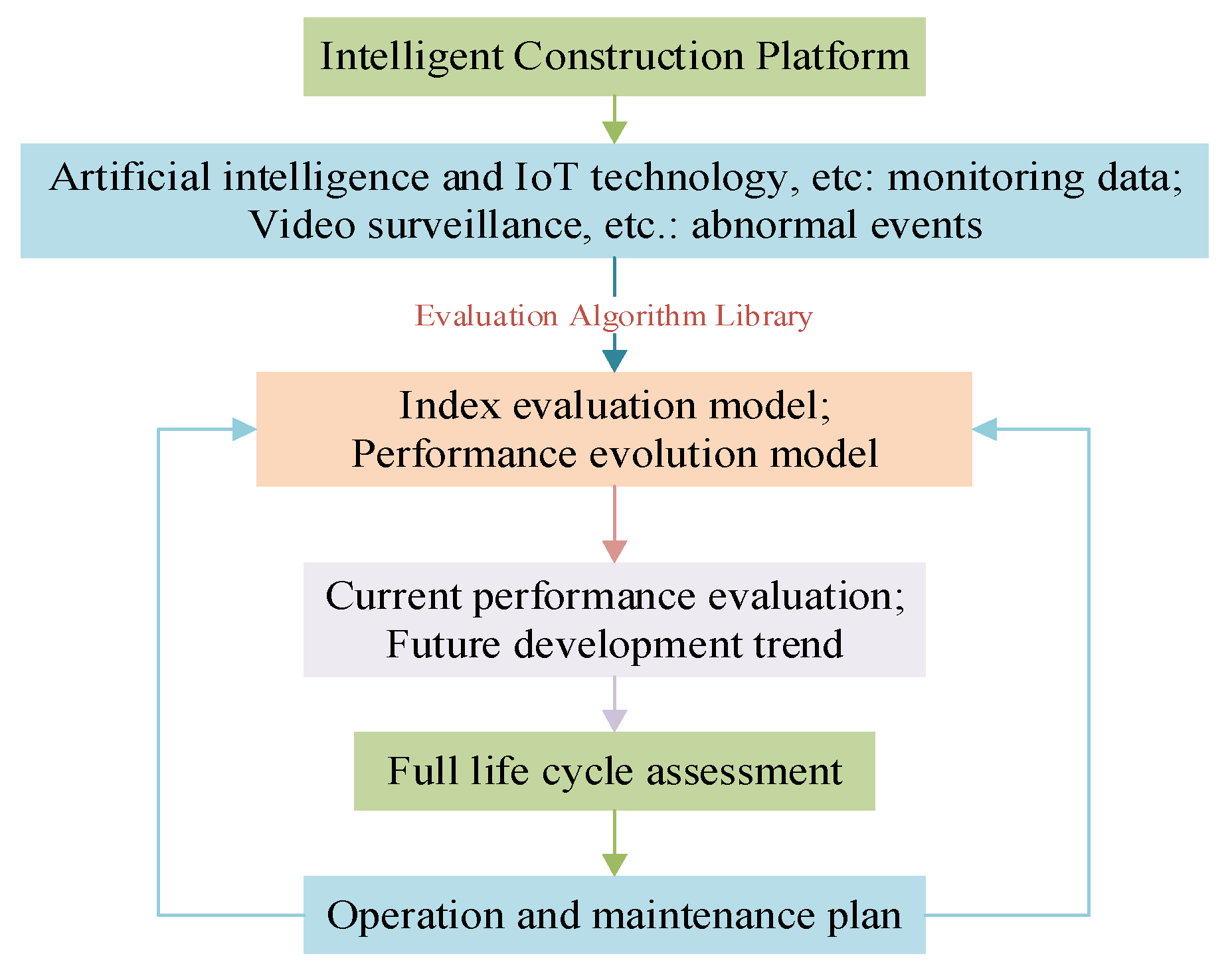
| Characteristics | Detailed Description |
|---|---|
| Overall perception | Carry on comprehensive and thorough information perception of key elements such as personnel, machine, object and environment in railway engineering construction |
| Intelligent diagnosis | Diagnose the obtained data and information, form the evaluation of railway construction quality, safety, efficiency and other indicators |
| Intelligent decision | The main difficulty of railway construction management is massive data. Through certain algorithms, decision-making information can be extracted from massive data to provide reference for construction management and construction decision making |
| Collaborative interaction | All participants can better coordinate and interact and fully realize resource sharing |
| Autonomous learning | From the massive data of the diary month, we continue to learn independently so as to adapt to the needs of railway construction and development |
Publisher’s Note: MDPI stays neutral with regard to jurisdictional claims in published maps and institutional affiliations. |
© 2022 by the authors. Licensee MDPI, Basel, Switzerland. This article is an open access article distributed under the terms and conditions of the Creative Commons Attribution (CC BY) license (https://creativecommons.org/licenses/by/4.0/).
Share and Cite
Wang, Y.; Wang, Z.; Ma, T.; Li, G.; Tie, H. Research on the Realization Path of Railway Intelligent Construction Based on System Engineering. Sustainability 2022, 14, 6945. https://doi.org/10.3390/su14116945
Wang Y, Wang Z, Ma T, Li G, Tie H. Research on the Realization Path of Railway Intelligent Construction Based on System Engineering. Sustainability. 2022; 14(11):6945. https://doi.org/10.3390/su14116945
Chicago/Turabian StyleWang, You, Ziwei Wang, Tingting Ma, Guowei Li, and Huixia Tie. 2022. "Research on the Realization Path of Railway Intelligent Construction Based on System Engineering" Sustainability 14, no. 11: 6945. https://doi.org/10.3390/su14116945
APA StyleWang, Y., Wang, Z., Ma, T., Li, G., & Tie, H. (2022). Research on the Realization Path of Railway Intelligent Construction Based on System Engineering. Sustainability, 14(11), 6945. https://doi.org/10.3390/su14116945






